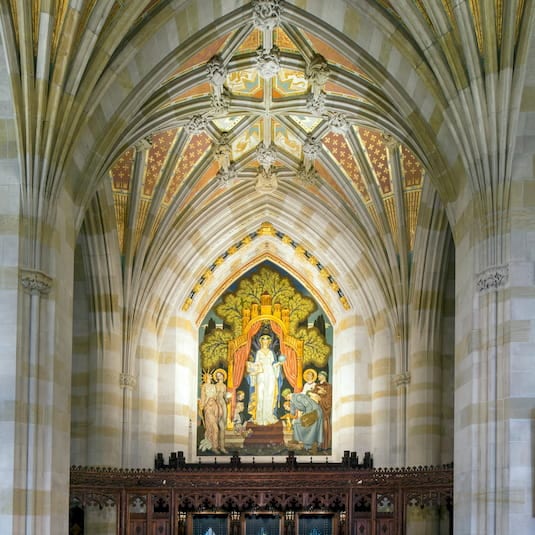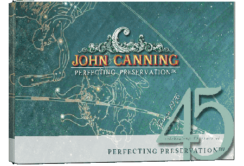Conservation & Preservation Of Historical Finishes and Architecture
Conservation services spanning every aspect of the project.
Our knowledge and expertise in conservation and preservation techniques allows us to provide problem-solving solutions for architects and clients from concept to project completion.
John Canning & Co. is committed to the “do no harm” philosophy ingrained in the American Institute for Conservation (AIC) code of ethics. With over 45 years of experience working in National Landmark and historic buildings, we are thoroughly capable to analyze and conserve fine art, decoration, wood, stone, plaster and restore gold leaf.
Conservation requires attention to detail, understanding of numerous subjects including chemistry, art history, the medium at hand, composition, etc. as well as a profound respect for the history and integrity of the artwork. The conservator must embody the process and intention of the original artist. The goal as a specialty architectural arts contractor, is to preserve the integrity of both the physicality and visual appearance of the artwork in order to "save our past for generations to come (American Institute for Conservation)."
Conservation Services for each Stage of the Project
DECORATIVE PAINTING & FINISHES
MURAL & ARTWORK CONSERVATION
STONE CONSERVATION
WOOD CONSERVATION
ARCHITECTURAL & EXTERIOR GILDING
PLASTER RESTORATION & STABILIZATION
Nationally Recognized by the Finest Organizations
Case Study
Sterling Memorial Library, Yale University
John Canning Co. conducted archival research, hands-on investigation, and interpretation to inform the conservation of the mural, decorative finishes, wood, and stone.
John Canning Co. researched and restored the woodwork, decorative finishes, and nave as intended in James Gamble Rogers's original Collegiate Gothic design. Canning developed the conservation cleaning techniques that took place on almost all of the finishes, including the coffered barrel vault ceiling.
Areas with new woodwork were refinished to blend seamlessly with the original. Canning Co.’s work also included in-painting areas of loss, reinstating missing relief ornamentation, and conservation of the Alma Mater Mural by Eugene Savage at the back wall of the nave.
1931
Year Built
4
Mediums Conserved
13,000
Square Feet

Download a Copy of Our Brochure
Download a free copy of our brochure to learn more about each of the services provided by John Canning & Co.

For those of us who have final responsibility for quality of work, your [Canning's] cooperative and thorough concern with both large and small details was very much appreciated.
Frequently Asked Questions
How do you determine the layer of paint of most historical significance? The most prolific colors, design, composition, etc?
Through years of handling different materials and mediums we have gained an understanding of how to approach conservation of any given object. By testing different solvents and cleaning methods we are able to clean the surface without doing harm to the object. Sometimes the most prolific design is not the most original. Understanding the intention of the room and the character of the building can, at times, be more important than the first campaign.
For example, many courtrooms were wallpapered for cost reasons prior to decorative paint. The intention was never to keep the rooms papered rather, to use the paper as a placeholder until the funds were raised paint the room. If one were too focused on conserving the “original” finishes versus the original intention, the design would be lost.
What is the difference between conservation and restoration?
Conservation intends to preserve the integrity and history of the artwork as well as the hand of the original artist. Restoration is true to the original intent however it is replication.
Although conservation requires artistic ability, the work of the conservator is more focused on caring for the stability and integrity of the work than their own ability as an artist. For example, when conserving a painting, the artist must embody the method of the original artist to inpaint losses and restrain from overpainting.
What is conservation cleaning?
Briefly, conservation cleaning can be broken into two categories: surface cleaning and removal. Surface cleaning does not affect the object, simply removes dirt. Conservation removal typically refers to varnish removal. The varnish may be removed for a number of reasons, one being the oxidation of the varnish causing it to yellow. Through an in-depth testing process, the proper means and methods to remove the varnish are determined. At the point the varnish is removed, the conservator is then fully able to access and interact with the damages to the artwork.
What are the dangers of overpainting? What is the difference between inpainting and overpainting?
There is a fine line between inpainting and overpainting; the former preserves the artwork in its original form and as much of the artist’s hand as possible, the latter blends the new with the old and risks losing the original intention of the artist.
Inpainting is simply filling in the holes and avoiding the cross over between the losses and the original composition.
The conservator is not the artist. The conservator does not alter the composition rather mends and preserves.







